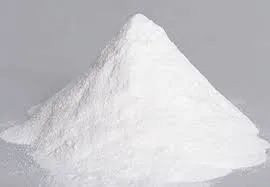
Dec . 12, 2024 14:01 Back to list
redispersible polymer powder manufacturing process
The Manufacturing Process of Redispersible Polymer Powder
Redispersible polymer powders are versatile materials widely used in construction, adhesives, coatings, and various other applications. Their unique properties, such as excellent adhesive strength, flexibility, and water resistance, have made them a popular choice in modern formulations. This article will delve into the manufacturing process of redispersible polymer powders, highlighting the various stages and considerations involved.
1. Raw Material Selection
The manufacturing process starts with selecting high-quality raw materials. The primary ingredients typically include water-soluble polymers, such as polyvinyl acetate (PVAc), styrene-acrylic copolymers, and ethylene-vinyl acetate (EVA). The choice of polymer depends on the desired end-use properties. Additionally, additives such as surfactants, stabilizers, and fillers may be incorporated to enhance the performance of the final product.
2. Emulsion Polymerization
Once the raw materials are selected, the next step is the emulsion polymerization process. This method involves creating a stable dispersion of the polymer in water, typically using a surfactant. The process begins by mixing the monomers with water and emulsifiers at controlled temperatures. A polymerization initiator is added to initiate the reaction, leading to the formation of polymer chains.
During this process, various parameters such as temperature, pH, and the concentration of initiators and surfactants are meticulously controlled to ensure the production of high-quality polymer dispersions. The result is a stable latex that contains small polymer particles dispersed in water.
3. Drying the Polymer Dispersion
Once the emulsion polymerization is complete, the next step is to convert the liquid polymer dispersion into a solid redispersible powder. The drying process is critical, as it must maintain the integrity of the polymer chains and ensure that the final product can easily rehydrate when mixed with water.
There are several drying methods available, with the most common being spray drying and freeze-drying. Spray drying involves atomizing the polymer dispersion into a hot air chamber, where the water evaporates quickly, leaving behind fine polymer particles. Freeze-drying, on the other hand, removes water through sublimation; the dispersion is first frozen, then subjected to a vacuum to evaporate the ice without passing through a liquid state.
4. Milling and Classifying
redispersible polymer powder manufacturing process

After drying, the resulting polymer powder may comprise aggregates or lumps of particles. To achieve the desired particle size and distribution, the powder is often milled and classified. This step ensures uniformity of the product and optimizes its performance when redispersed in water.
Various milling techniques may be employed, including mechanochemical milling, roller milling, and jet milling. Each method has its advantages, and the choice depends on the specific characteristics required for the final application.
5. Quality Control
Quality control is an essential part of the manufacturing process, ensuring that the redispersible polymer powder meets strict industry standards. Samples are taken at various stages of production to test for properties such as particle size distribution, flowability, moisture content, and re-dispersibility.
Advanced analytical techniques—the likes of laser diffraction for particle size analysis and rheological testing for evaluating flow behavior—are employed to confirm that the product matches the specifications set out for the target market.
6. Packaging and Storage
Once the final product passes quality control, it is packaged for distribution. Redispersible polymer powders are typically packed in moisture-proof bags or containers to prevent hydration and maintain quality during storage. Careful labeling is crucial, providing essential information regarding the product, including batch numbers and safety instructions.
Proper storage conditions—away from moisture and direct sunlight—are vital to prolonging the shelf life of the product and preserving its effectiveness.
Conclusion
The manufacturing process of redispersible polymer powders is a complex yet well-defined series of steps, from raw material selection to packaging. Each stage plays a crucial role in ensuring the production of high-quality powders that meet the diverse needs of various industries. As the demand for innovative construction materials and adhesive technologies continues to grow, understanding this manufacturing process becomes increasingly important for manufacturers aiming to deliver superior performance products. Through careful attention to detail and rigorous quality control, the production of redispersible polymer powders stands as a testament to modern material science's capabilities.
-
Versatile Hpmc Uses in Different Industries
NewsJun.19,2025
-
Redispersible Powder's Role in Enhancing Durability of Construction Products
NewsJun.19,2025
-
Hydroxyethyl Cellulose Applications Driving Green Industrial Processes
NewsJun.19,2025
-
Exploring Different Redispersible Polymer Powder
NewsJun.19,2025
-
Choosing the Right Mortar Bonding Agent
NewsJun.19,2025
-
Applications and Significance of China Hpmc in Modern Industries
NewsJun.19,2025







